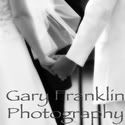Mr. Tide and I went out last weekend and hit a few stores. The thrift store, where I picked up some mugs for 35 cents a piece that match some I already have, and a silver tray that I'll be using for an upcoming bridal shower my daughter and I are hosting.
We also walked next door to an antique mall called
Maryland Antiques Center which has an array of items from artwork to antique navigational tools, and everything in between. I was on the hunt for some antique ironstone pitchers but came up empty handed in that department. What I did stumble across, in a box on the floor near the register, were these wonderful old glass insulators. They aren't terribly valuable, some even have damage, and truth be told I probably even over paid on a few of them (the small ones were $4 and the larger ones were $5.50), but they were calling my name so I bought them. They all need a good bath, which from what I've been reading entails acid and a good long soak, so they may stay dirty for a bit longer.
There is something so appealing about old utilitarian pieces that are beautiful in their own right that has me wanting to fill my house with these lost or forgotten items right now.
And to think that these beauties were once hard working little insulators along railway lines on telegraph and telephone poles makes them all the more nostalgic and special to me.
Below is a little history about insulators and how they were used, from this
website.
Insulators have been around longer than most people realize. The first rudimentary telegraph line was built between Paris and Lille, France in 1793. The need for insulators to insulate the wire from grounding out soon became apparent. There were a number of early experimental lines in Europe and the United States before Samuel F. B. Morse finally developed a fully functional and commercial system using his particular code. He built his first commercial line between Baltimore and Washington, D.C. in 1844.

Insulators were first used extensively in the mid-1840s with the invention of the telegraph. They were necessary to prevent the electrical current passing through the wire from grounding out on the pole and making the line unusable. The first insulators were a beeswax soaked rag wrapped around the wire. They worked well in the dry laboratory but soon broke down when exposed to the weather. The next concept was a glass knob, which looked much like a bureau knob one might still find on antique furniture today, mounted on a wood or metal pin. From this evolved the pin style insulator, which had no threading inside the pinhole. It was cemented to the pin by driving it down on the pin with a mallet on an asphalted rag. This was not a perfect answer because the weather worked on the rag and eventually the insulator would work loose and pop off the pin allowing the wire to contact a grounding surface. Inevitably, however, as telegraph lines traced the westward expansion of railroad lines across the states, glass manufacturers began to create many new designs in an effort to secure a niche in the rapidly growing insulator market.

Thus, by the advent of the Civil War in 1860, original insulator models could be found in both porcelain and glass. While glass was more common from the beginning for telegraph and telephone line insulation, porcelain would later gain a firm foothold as the preferred material for insulating high voltage power lines. Over time, glass manufacturers would produce hundreds of designs; millions of insulators were made of glass and porcelain, then later of rubber, plastic and other composite materials.
So there you have it, a little history about glass insulators. And all this time I just thought they were shiny, came in cool colors, and were something different for me to use to decorate my house!































.jpg)





























































































Ooooh, color me jealous! And in my favorite shade of aqua too! I have no full insulators but I have several insulator pieces that I've plucked off the shorelines. I love how thick and heavy the glass is-
ReplyDeleteIf you have no plans for these, I've got an idea for you (something I've been storing away for the day when I come across a few of my own beauties...) It involves driftwood and candlelight. If you're interested, let me know I'll share the details. :)
My husband, father and grandfather all work/worked for a power company. My dad collected old insulators for years, he still has a few special ones. We have 2 large ones that we have in the flower garden, they are unique in shape and color...I should take a picture of them. So many of them are green...I love the blue of yours.
ReplyDeleteI have a couple old insulators that I turned up-side down, and made a stand out of some wire and use as a candle holder. I love all the colors you find them in.
ReplyDeleteThose are great. I love the color of them. My husband use to have some clear insulators and dumb me I got rid of them. They are kind of pricey at flea markets and antique stores these days. Wish I had known they would be wanted.
ReplyDeletehello! thank you for stopping by this morning! what a fun place you have here!! i love these insulator pieces ... i have to admit, i've never seen them before ... at least not like this! how pretty!!!
ReplyDeleteI've always loved insulators! I remember laying in the back window of my dad's old car (back in the 60's) and watching the telephone/electricity lines going by, with the pole and insulators all in a row on the top of the T. Now that I'm an adult and can collect them, I've come across a few that I've fallen in love with...including a porcelain one on an old barbed wire fence being used to hold it together across the street from me!! I'll hopefully be there when it's replaced and ask nicely if I can have it!! Great find, and thanks so much for the history lesson on them! Very interesting!
ReplyDeleteDoni
I've wondered if those were still around! I remember them from years ago and always loved the beautiful blue colors! Great find! It's worth it to get something you will enjoy! ♥
ReplyDeleteWhat a cool history. We found a huge box in my grandparent's attic. He was a builder and would collect things like this from sites he cleared. I love the color of them, especially when light is shining through them. So pretty!
ReplyDeleteI luuuuuve old insulators. I just put some in my guest room as bookends. :o) Mine are dirty-ish too, even after soaking and scrubbing. (didn't use acid- sounds scary!
ReplyDeleteThanks everyone, I love hearing about all of the cool insulator memories and owners out there...now I know I'm not crazy for loving mine!
ReplyDeleteOlivia, it won't let me comment on your blog for some reason and there is no email address listed for you. But I wanted to let you know that there is a website out there that tells you how to clean insulators. The acid they recommend is very mild and if that doesn't work they recommend Lye, but you have to be much more careful with Lye.
http://www.insulators.info/care/cleaning.htm
That is the website. Good luck!
Kat :)
I love that colour of blue - one of my favourite.
ReplyDeleteSo this is where some of my beach glass comes from. Love the colors. They are my favorite! So many styles and variations of color. What fun!
ReplyDeleteKeep your toes in the sand!
I'm going to have DH put up a clothes line for me and I'm going to make the posts look like old telegraph lines. Each line for hanging clothes will be from under an old insulator.
ReplyDeleteI've seen them for $3 to $4 here in the Nashville area.
Love the aqua color of yours, I haven't seen many in that color here. I would have bought them too. They would go nicely with those Ball canning jars in that color. Thanks for the interesting history lesson! ~Lili
ReplyDeleteThose are absolutely beautiful, just the kind of old utilitarian objects with intrinsic beauty. Great find!
ReplyDeleteOK, that idea from Teri above is a cute one, isn't it?
ReplyDeleteMy dad brought some home from an auction back when he was alive because he was drawn to the nostalgic feeling they evoked. Mom was drawn to the color and displayed them. I think they are lovely!